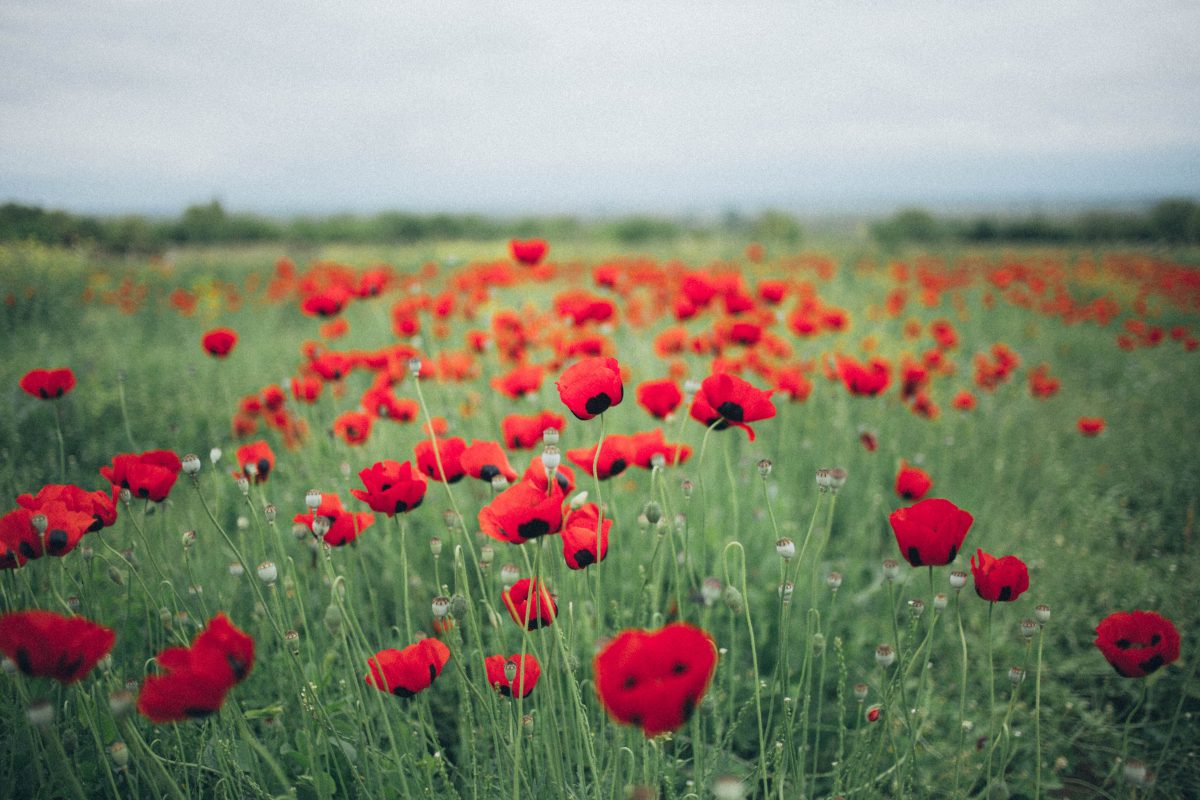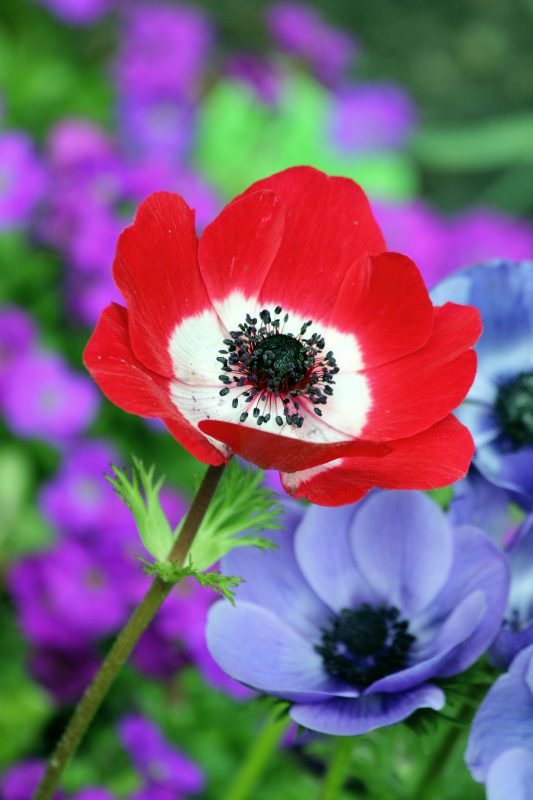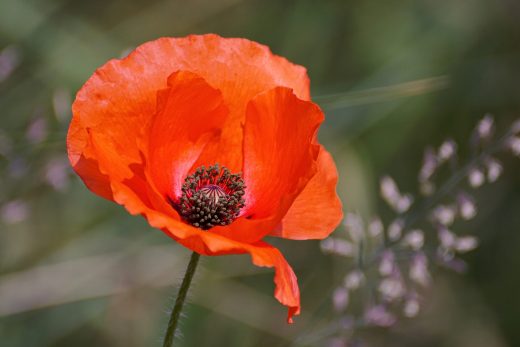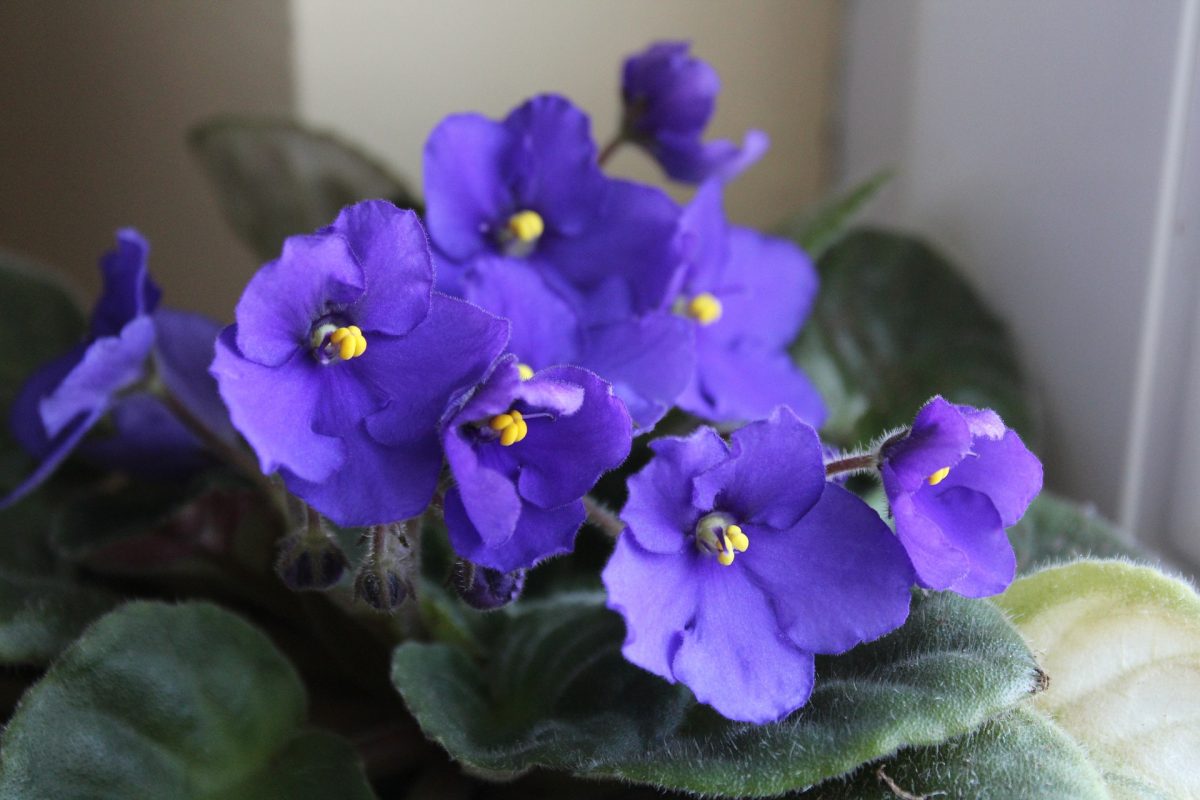If you’re looking to add a splash of color and beauty to your garden, growing poppy may be just what you need. These vibrant blooms are not only rewarding to look at, but they are also relatively easy to care for. They’re a fabulous addition to wildflower gardens that attract all sorts of pollinators.
In this article, we’ll provide you with some tips on how to get started with growing poppy in your own backyard. From choosing the right location to enjoying the blooms, we’ve got you covered. If you’re ready to try growing poppies in your own garden, here’s everything you need to know.
What Varieties Work Best?
When you’re talking about over 120 varieties to choose from, the possibilities are endless when it comes to growing your own poppies. They’re even a big part of your favorite wildflower mixes.
You can choose to sow a variety of colors and styles to get that natural wildflower garden look that appeals to many, or keep it organized and clean with a dramatic bed of a single color.

The most popular variety is the Flanders or field poopy with its bright red-orange petals that’s used as a remembrance for soldiers from the first World War.
If you want something a little more long-lasting there’s the Oriental poppy that has larger blossoms with more frills and are biennial or perennial depending on where you are.
Some more experienced gardeners grow the opium poppy as their seeds are edible. The seeds of many other varieties aren’t edible so you’ll need to be careful. You’ll also want to make sure you don’t try to consume any other parts of this beautiful plant as it’s poisonous.
When Should You Plant Poppies?
While you’ll have to look at the instructions on the seed packet of the particular variety you’re planting, you generally have two options when planting poppies.
Planting in the spring between March and May is best for an early planting. However, planting in the spring means you’ll probably have to wait until the following summer for a full display of delicate, healthy flowers.
If you decide to sow in the autumn (recommended), plant between August and October to get more flowers during your first summer blooming season.
In the end, make sure to check the seed packet for more specific instructions regarding the exact poppies you want to plant.

Sowing Poppy
Poppies are one of the easiest plants to grow. They’re a great choice for beginners, kids and people with limited space. If you want something beautiful that will also help your garden, poppies are perfect!
You’re going to want to plant your poppies in a sunny spot. To prepare the soil, make sure to remove all weeds as they don’t combat them well on their own. Amend the soil as necessary to give good drainage and rake it out so everything’s nice and fine.
Plant your seeds when your soil reaches a steady 65- to 75-degrees F. Do not cover your poppy seeds with soil. Unlike many other seeds, poppies need light to germinate!
For a more natural looking poppy garden, pour some seeds into your hands and sprinkle them over the prepared soil thinly creating drifts.
Poppies take between one week and one month to germinate depending on what variety you’re sowing, the soil you’re using, and the temperatures outside. Make sure to keep the soil just moist during this process.
Once they’ve grown adult leaves, thin out your seedings to keep about 12 inches between individual plants.
Alternatively, you can start the seeds in your house or buy already grown plants from your local garden center. Make sure to wait on planting any poppies outside until after the threat of frost has passed.
If you’re going this route, make sure to be very careful when planting. Most poppy varieties don’t like their roots disturbed. It really is best to directly sow your poppies right in the garden!
Growing Poppies
You’ll want to water your poppies regularly, especially if you’re not getting a lot of natural rainwater. Don’t over water though. Too much water results in your poppies growing too fast and getting leggy, or worse, root rot.
When it comes to soil additives, your poppies generally like fertile soil with little competition. They also don’t like it too hot, so if your garden gets higher temperatures, make sure to provide them with a little afternoon shade.
Tips & Tricks For Growing Poppies

- If you want more blooms, deadhead the spent flowers. Removing the spent flowers before they go to seed encourages the plant to create more.
- If you’d like them to self-sow and spread, let some of the blossoms go to seed. If you don’t want your garden to spread, make sure to remove the spent blossoms before they seed.
- To harvest seed pods you simply cut the pods off when they turn a light brown. Let the pods dry for a week or two and then break them open and harvest the seeds. Harvested seeds will last up to two years.
- If you’re growing an annual variety, once the poppies have created seed pods, pull up the plants and turn them back into the soil for compost.
- If you’re growing the biennial or perennial varieties, then cut back all the foliage in the fall. Mulch the garden with compost, leaf. Mold, or bark chips to help protect the roots over the winter.
- With the perennial plants you’re going to want to divide the plants when they grow large enough. Dividing poppy plants should happen in the late summer once they have stopped blooming for the season. If you divide them too early you may damage the taproot and kill the plant.
- Spacing your plants 12 inches apart decreases your chances of fighting with powdery mildew.

Conclusion
We hope this article has given you some inspiration to grow your own poppies. They are a beautiful flower with many different varieties that can be grown in almost any climate. Poppies are easy to care for and make great gifts or decorations for your home.



